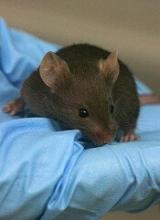Researchers say they have discovered how hypoxia increases the risk of thrombosis.
The team noted that the cellular response to hypoxia is mediated by hypoxia-inducible factor 1 (HIF1).
The researchers were able to show that HIF1 downregulates expression of protein S (PS), a natural anticoagulant, which increases the risk of thrombosis.
“Our earlier work found that PS inhibits a key clotting protein, factor IXa,” said Rinku Majumder, PhD, of LSU Health Sciences Center in New Orleans, Louisiana.
“We knew that PS deficiency could occur in hypoxia but not why. With this study, our group identified the gene regulatory mechanism by which oxygen concentration controls PS production.”
Dr Majumder and her colleagues described this discovery in a letter published in Blood.
Because PS is primarily produced in the liver, the researchers cultured human hepatocarcinoma cells in normoxic and hypoxic conditions and then measured levels of PS.
The team found that increasing hypoxia reduced PS levels and increased stability of the HIF1α subunit of HIF1. The researchers said this inverse relationship between HIF1α and PS levels suggests HIF1 might regulate PS expression, and this theory was confirmed via experiments with mice.
Dr Majumder and her colleagues pointed out that an oxygen-dependent signaling system degrades HIF1α, and oxygen deficiency prevents HIF1α degradation. The HIF1α P564A mutant (HIF1α dPA) is resistant to degradation, which results in elevated HIF1 even in normoxic conditions.
The researchers conducted experiments with knockout mice expressing HIF1α dPA in the liver, HIF1α liver-specific knockout mice, and control mice.
When compared to PS levels in liver samples from control mice (100%), PS levels were elevated in liver samples from the HIF1α liver-specific knockout mice (220%) and reduced in samples from the HIF1α dPA mice (50%).
PS messenger RNA was 2-fold higher in HIF1α knockout mice than in controls. In HIF1α dPA mice, PS messenger RNA was 0.3-fold that of controls.
PS levels in plasma from HIF1α knockout mice were double the levels of controls, while PS levels in plasma from HIF1α dPA mice were half that of controls.
Plasma from HIF1α knockout mice produced 5-fold less thrombin and plasma from HIF1α dPA mice produced 1.5-fold more thrombin than control plasma.
Subsequent experiments confirmed that the variations in thrombin generation were due to changes in plasma PS levels, the researchers said.
The team concluded that stabilization of HIF1 in the liver, which is a normal response to hypoxia, is associated with reduced PS expression. This results in lower plasma PS levels and an increased risk of thrombosis.


